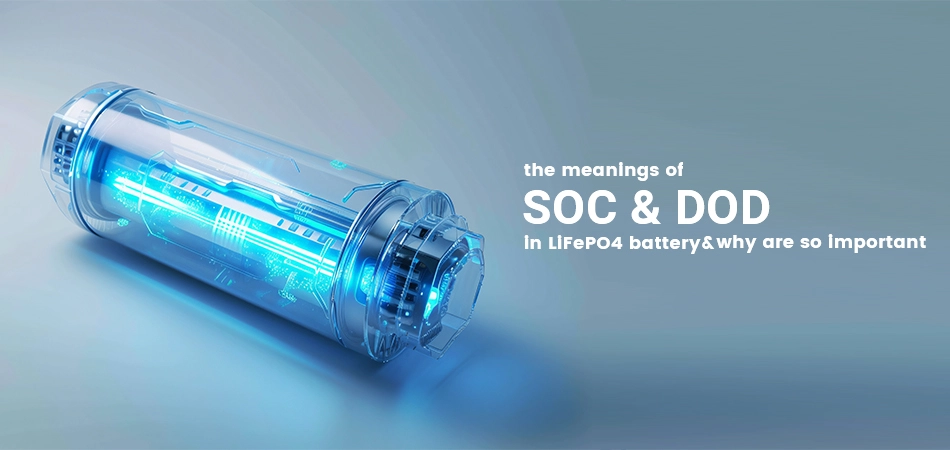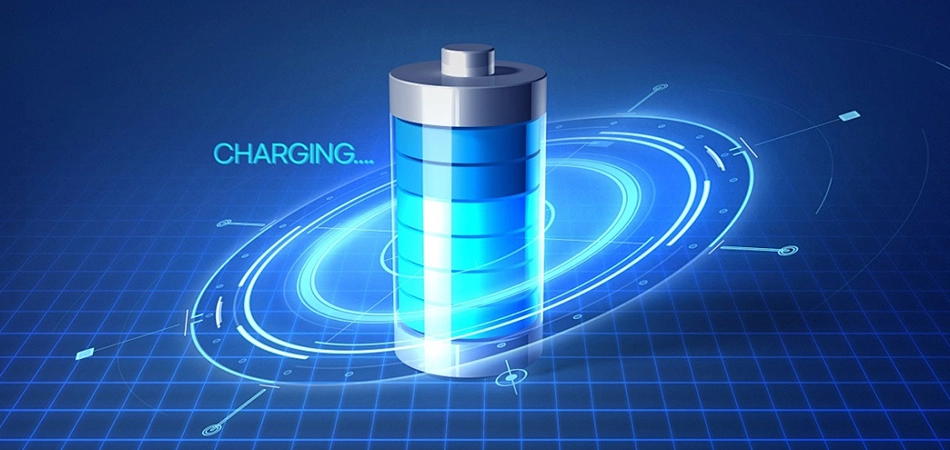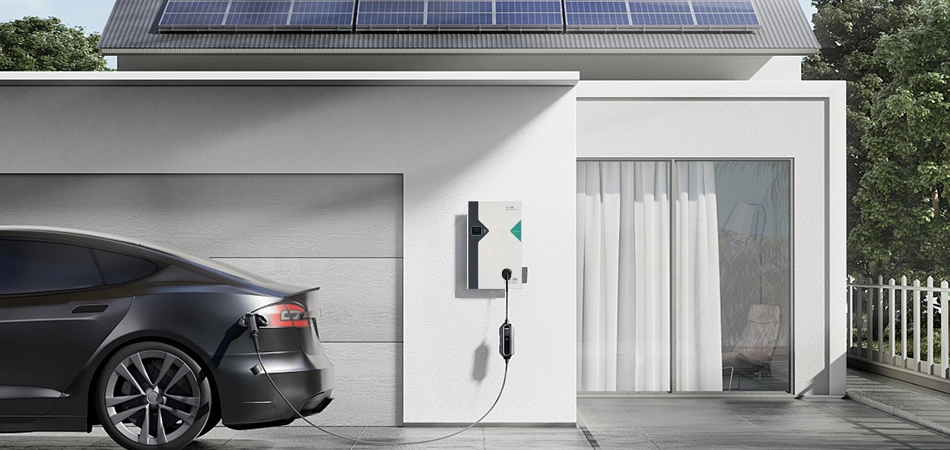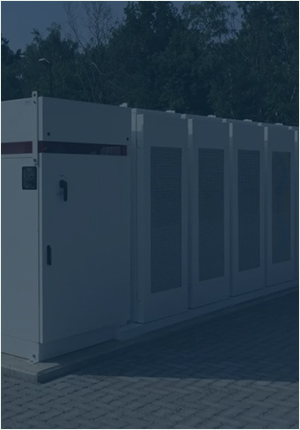2024-11-29 Author : CXJPowers
In recent years, LiFePO4 batteries have become the go-to power source for a wide range of applications, from smartphones and electric vehicles (EVs) to renewable energy systems and portable electronics. To maximize their performance, longevity, and safety, it is essential to understand two key concepts: SOC (State of Charge) and DoD (Depth of Discharge). These parameters directly affect the efficiency, lifespan, and overall performance of LiFePO4 batteries.
This article will break down these critical concepts and explain their importance in battery management, particularly in the context of lithium-based energy storage systems.

State of Charge (SOC) refers to the current charge level of a battery relative to its full capacity. In simpler terms, it is the battery's "fuel gauge" that tells you how much energy is left in the battery.
SOC is usually expressed as a percentage, where 100% means the battery is fully charged, and 0% means the battery is empty.
Monitoring SOC is crucial for ensuring optimal battery performance and preventing overcharging or deep discharging, which can shorten the battery's lifespan.
Key Points About SOC
Keeping a lithium-ion battery's SOC within a safe range (typically 20-80%) can extend its lifespan. Charging to 100% or discharging to 0% regularly can strain the battery, reducing its number of charge cycles.
SOC helps with efficient energy management in systems like electric vehicles (EVs) and renewable energy storage. For instance, a car's onboard system uses SOC data to indicate the remaining driving range, or an energy storage system uses SOC to optimize when to charge or discharge based on grid demand.
SOC is not always 100% accurate, especially in LiFePO4 batteries. It is typically calculated using voltage measurements, current sensing, or algorithms that account for factors like temperature, battery age, and load conditions.
Electric Vehicles (EVs): EVs use SOC to display the remaining battery charge, helping drivers plan trips and charge stations accordingly.
Consumer Electronics: Smartphones, laptops, and wearables rely on SOC to warn users when the battery is running low.
Renewable Energy Storage: In solar or wind energy systems, SOC helps manage when to store energy or when to draw from the battery, optimizing energy use.

Depth of Discharge (DoD) measures how much of a battery's capacity has been used. It is the opposite of SOC and refers to the percentage of the total battery capacity that has been discharged. For example, if a battery with a total capacity of 100Ah is drained to 50Ah, the DoD would be 50%.
DoD is a critical factor in battery lifespan and performance, as frequent deep discharges can cause irreversible damage to LiFePO4 batteries, reducing their total lifespan.
LiFePO4 batteries typically have a higher cycle life when discharged to a lower DoD (e.g., 30-50%). Deep discharges (e.g., 80% or more) can stress the battery and significantly reduce the number of charge cycles the battery can endure before its capacity starts to degrade.
DoD is inversely related to cycle life—shallow discharges (e.g., 20-30%) generally result in more charge cycles before the battery’s capacity drops below 80%. As a rule of thumb, the deeper the discharge, the fewer the total cycles the battery can go through.
The DoD is closely linked to the discharge rate. A high discharge rate (e.g., high power output) can lead to faster depletion of the battery’s capacity, increasing the DoD more quickly than a slow discharge.
Electric Vehicles (EVs): EVs are designed to operate optimally within a certain DoD range. For instance, most EVs aim to keep the DoD between 20% and 80% for maximum efficiency and to avoid deep discharge damage.
LiFePo4 home battery: In renewable energy systems, batteries are often cycled between a range of DoD (e.g., 30-80%) to optimize lifespan and ensure reliable energy storage.

While SOC and DoD are distinct concepts, they are closely related. SOC reflects the current charge level, whereas DoD describes how much of the battery's capacity has been used up. Together, these two parameters provide a complete picture of a battery's state.
For example, when a battery is at 100% SOC, the DoD would be 0% (since no energy has been used yet). Conversely, when a battery is at 0% SOC, the DoD would be 100% (indicating that the battery is fully discharged).
Shallow Discharges: To maximize battery life, it's recommended to keep the battery SOC between 20% and 80%. This helps minimize deep discharges (high DoD) and reduces the wear on the battery, leading to a longer lifespan.
Avoiding Full Discharges: Deep discharges (over 80% DoD) and fully draining a lithium-ion battery to 0% SOC can shorten its cycle life. It's best to avoid these extreme conditions.
LiFePO4 batteries are engineered to handle thousands of charge cycles, but managing SOC and DoD correctly can significantly affect how long the battery will last and how efficiently it operates.
Cycle Life: A typical lithium-ion battery may last between 500 to 1500 full charge-discharge cycles, depending on how well the SOC and DoD are managed.
Battery Efficiency: Keeping the SOC in an optimal range ensures the battery operates at its best efficiency. Too high or too low SOCs can reduce efficiency and lead to quicker wear.
Thermal Management: Both SOC and DoD impact the temperature of the battery. A high discharge rate (deep DoD) or a full charge (high SOC) can generate excessive heat, which further degrades the battery.
BTW, there is another parameter SOH (State of Health) that key for LiFePO4 batteries.
State of Health (SOH) is a critical parameter used to assess the overall health or condition of a system, particularly in the context of batteries and energy storage systems. It provides an indication of the battery's capacity to perform relative to its original, brand-new condition. SOH is typically expressed as a percentage, with 100% representing a new or fully functional state, and lower percentages indicating degradation or loss of capacity over time.
SOH is an essential metric for evaluating the efficiency, longevity, and reliability of batteries in applications such as electric vehicles (EVs), renewable energy storage, and portable electronic devices. As a battery undergoes use, factors like charging cycles, temperature fluctuations, and aging cause chemical changes within the cells, leading to a gradual reduction in the battery's capacity and performance. Monitoring SOH helps to predict maintenance needs, optimize usage patterns, and prevent unexpected failures.
In addition to its role in assessing battery health, SOH also plays a crucial role in safety. By providing real-time insights into the state of a battery, SOH data can help detect potential issues, such as overcharging, deep discharging, or thermal runaway, which could compromise the system's safety.
Several factors contribute to the degradation of a battery's SOH over time:
Each battery has a limited number of charge and discharge cycles before its capacity starts to degrade. The more cycles a battery undergoes, the lower its SOH will become.
Extreme temperatures, either too high or too low, can accelerate battery aging and affect its performance. Maintaining optimal operating temperatures is key to preserving SOH.
Frequently discharging a battery to very low levels can significantly shorten its lifespan and reduce SOH.
High charge and discharge currents can cause excessive stress on a battery, contributing to its degradation.

Understanding SOC (State of Charge) and DoD (Depth of Discharge) is essential for getting the most out of your lithium-ion battery, whether you're using it in an electric vehicle (EV), consumer electronics, or a renewable energy system. By managing these two parameters properly, you can optimize battery performance, extend its lifespan, and avoid the pitfalls of overcharging or deep discharging.
To maximize battery life:
Aim to keep SOC between 20% and 80%.
Avoid deep discharges (DoD over 80%) whenever possible.
Use smart charging practices and monitor battery health regularly.
By following these guidelines, you can ensure that your LiFePO4 batteries operate efficiently, reliably, and last as long as possible.
------------------
Welcome to customize LiFePO4 batteries. Contact us now!
CXJPowers provides one-stop customized portable power supplies, LiFePO4/ternary lithium battery pack packs, emergency energy storage solutions, and supports OEM&ODM services.



